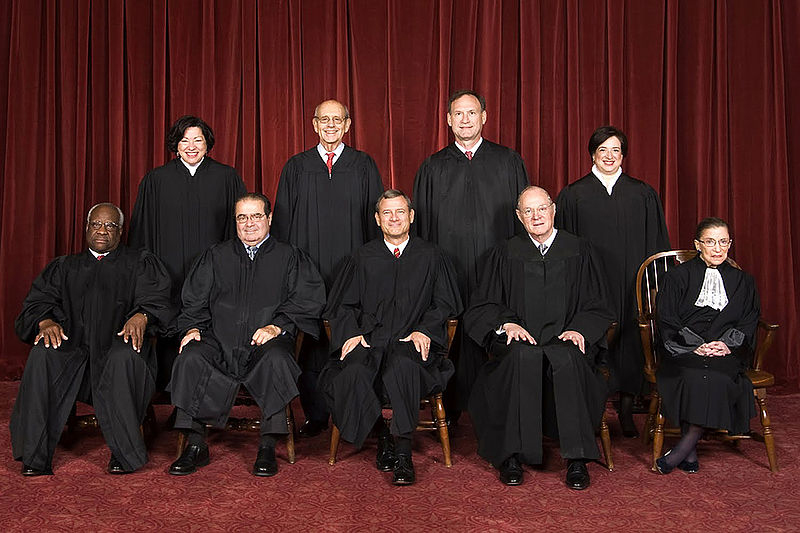Last Wednesday, we took a look at the alleged inconsistency between recognizing religious pro-lifers’ right to abstain from participating in abortion but not a Missouri Satanist’s claim that abortion waiting periods violate her religious beliefs. I focused on the difference from a natural-law perspective—i.e., that no religious belief can extend to violating another person’s life, liberty, or property, which abortion does.
A century ago, that would have sufficed, and hopefully will again when we eventually return American jurisprudence to a more originalist, limited-government footing. Today, however, cases are decided predominantly by convoluted balancing tests either written by legislatures or fabricated by judges.
All too often these needlessly complicate what should be straightforward questions of how to apply first principles, but on the bright side, sometimes our lawmakers manage to construct such statutory tests that reinforce the Constitution, rather than bury it—such as the Religious Freedom Restoration Act. Let’s see what light it can shed on this controversy.
The federal RFRA is pretty straightforward:
Government may substantially burden a person’s exercise of religion only if it demonstrates that application of the burden to the person—
(1) is in furtherance of a compelling governmental interest; and
(2) is the least restrictive means of furthering that compelling governmental interest.
Missouri’s version is similar:
A governmental authority may not restrict a person’s free exercise of religion, unless:
(1) The restriction is in the form of a rule of general applicability, and does not discriminate against religion, or among religions; and
(2) The governmental authority demonstrates that application of the restriction to the person is essential to further a compelling governmental interest, and is not unduly restrictive considering the relevant circumstances.
In Burwell v. Hobby Lobby, concerning the Health and Human Services Department’s contraception mandate, the Supreme Court punted on RFRA’s first question, deeming it unnecessary to decide whether no-copay abortifacients was a “compelling government interest,” (too bad, because we’re long overdue to restore enumerated powers doctrine in “compelling interest” doctrine’s place, but I digress). Fortunately, their answer to the second question was that it didn’t matter in this case anyway, because HHS could have gotten what it wanted without coercing religious employers:
The Government has failed to satisfy RFRA’s least-restrictive-means standard. HHS has not shown that it lacks other means of achieving its desired goal without imposing a substantial burden on the exercise of religion. The Government could, e.g., assume the cost of providing the four contraceptives to women unable to obtain coverage due to their employers’ religious objections. Or it could extend the accommodation that HHS has already established for religious nonprofit organizations to non-profit employers with religious objections to the contraceptive mandate. That accommodation does not impinge on the plaintiffs’ religious beliefs that providing insurance coverage for the contraceptives at issue here violates their religion and it still serves HHS’s stated interests.
How does a 72-hour waiting period for abortion fare? First, as something applying to anyone seeking an abortion, it obviously fulfils the general-applicability requirement.
Second, Roe v. Wade and Planned Parenthood v. Casey both recognize that the state has an interest in protecting fetal life that gives it the authority to regulate abortion, even if they fail to follow that logic to outright prohibition.
Third, a waiting period is obviously the least restrictive way to get someone to take the time to carefully consider a decision—in fact, Casey itself agrees waiting periods don’t constitute undue burdens:
The waiting period helps ensure that a woman’s decision to abort is a well-considered one, and rationally furthers the State’s legitimate interest in maternal health and in unborn life. It may delay, but does not prohibit, abortions; and both it and the informed consent provisions do not apply in medical emergencies.
So the only legal argument left Team Satan could possibly make would be that Casey was ruling on a one-day wait, and that it’s more burdensome to have to wait three. But it’s hard to imagine such a minor difference of degree rather than kind is what most of the authors of most RFRAs had in mind. There’s no absolute, quantifiably “right” number of days it takes to fully think through any life-changing decision. That’s a judgment call beyond the scope of a court to determine, and as such is up to the people to decide through elected policymakers they can hold directly accountable.
So regardless of whether we’re playing by originalist or contemporary rules, the Satanic Temple hasn’t a leg to stand on. Who would have guessed that a deal with the devil would leave pro-aborts empty-handed?







